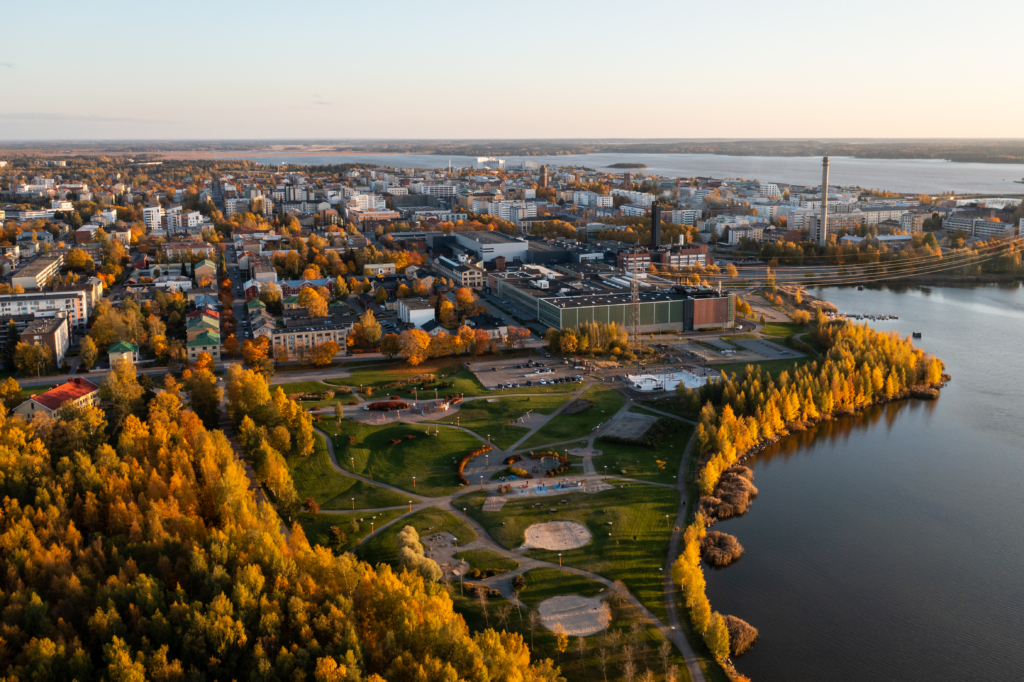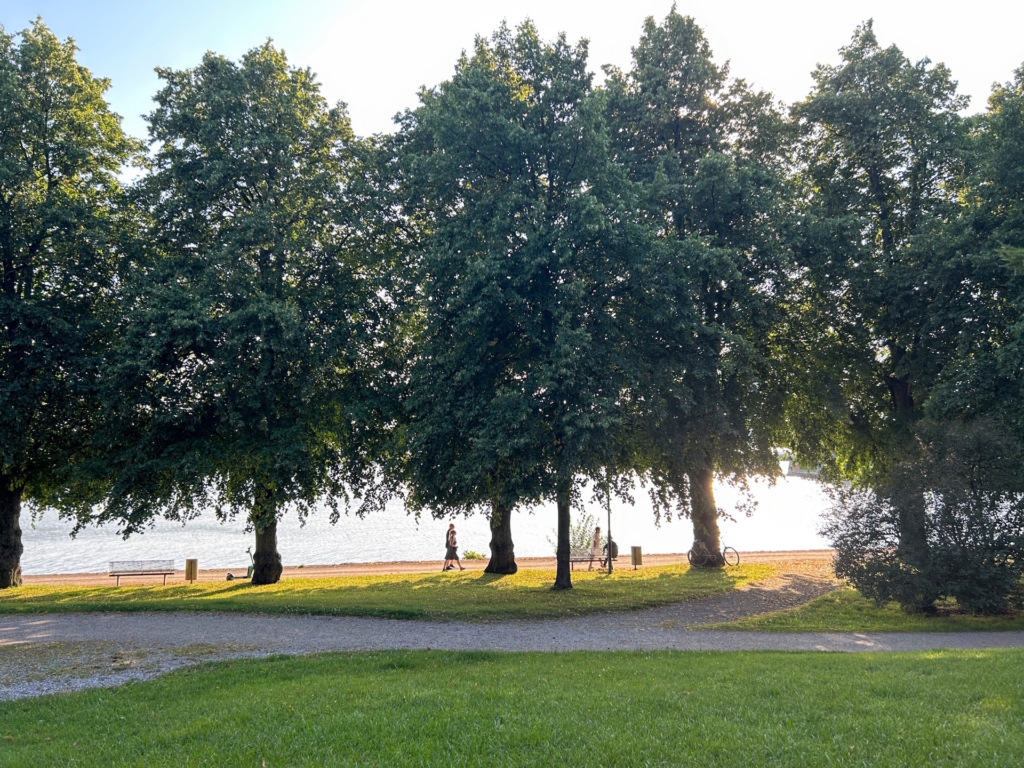Adapting to climate change
Adaptation to climate change refers to measures that allow individuals, communities, and organisations to adjust to the changing conditions caused by climate change. This can include preparing for extreme weather events, accounting for rising sea levels, or managing changes in ecosystems. The goal of adaptation is to reduce the negative impacts of climate change and take advantage of the opportunities it brings.
The importance of action is particularly emphasised for long-term sustainability and well-being. Successful adaptation measures can reduce the risk of crises and disasters while improving quality of life and economic stability.
Towns and cities play a crucial role in planning and implementing climate change adaptation measures as they are responsible for developing and maintaining infrastructure, protecting the environment and promoting the well-being of their residents.
The City of Vaasa aims to become climate-ready
The City of Vaasa has signed the EU Charter of the Mission on Adaptation to Climate Change. To further develop its adaptation work, the city has assessed the current state of its adaptation efforts and identified areas for development, including in the Sustainable Energy and Climate Action Plan (SECAP).
The adaptation measures in the Action Plan cover flood protection, stormwater management, transport infrastructure, cooling buildings and the urban environment, and biodiversity protection.
Adaptation and infrastructure
Sustainable urban planning
The goal of sustainable urban design is to create vibrant, sustainable and adaptable urban environments that can meet the challenges of growth and climate change. Sustainable urban planning also takes into account the impacts of climate change, such as the cooling needs of buildings and urban environments, flood prevention and stormwater management.
City planning
With climate change, heat waves will become more common, increasing the need to cool buildings and urban environments. In Vaasa, too, it is important that urban planning takes these needs into account by designing green areas and parks that mitigate the heat island effect. In addition, building placement, orientation, and shading solutions can significantly reduce the need for cooling energy.
It is important to consider stormwater management in the planning process, such as through stormwater reports. Reports can identify flood routes and delay needs in the area, as well as address necessary land allocations and city planning regulations. It is important to note that underground stormwater drains are dimensioned and designed to function under normal conditions, so planning must also take into account the above-ground flood routes required by heavy rainfall.
During the planning process, above-ground flood routes should be carefully examined and designed to ensure that water is safely redirected away from residential areas and critical infrastructure. Modelling is a key tool for assessing the impacts of climate change and examining the capacity of the current system.
Green efficiency in city planning
Green efficiency in city planning refers to ensuring that there are adequate permeable surfaces and vegetation in the urban environment. This reduces the impact of extreme weather events, such as flooding caused by heavy rainfall, and supports the ecological sustainability of towns and cities.
Green efficiency is an essential part of climate change adaptation and sustainable urban development in Vaasa. The Green Efficiency method has been tested in Vaasa’s residential and public building areas.
Stormwater management
Stormwater management involves handling and treating rainwater and meltwater to prevent flooding or damage to buildings, infrastructure, and the natural environment. Optimising treatment at the source ensures that pollutants and microplastics are not discharged into water bodies.
Stormwater management is linked to climate change adaptation in several ways. Climate change will increase the frequency of heavy rainfall and extreme weather events, which may lead to flooding and challenges in managing stormwater in Vaasa. Stormwater management helps reduce the negative impacts of these weather phenomena and protect the urban environment, residents, and their property.
In Vaasa, stormwater management is an essential part of infrastructure and a key element of sustainable urban planning. For example, city planning plays a crucial role in stormwater management. Planning solutions can, for example, ensure plot-specific stormwater management and the use of green spaces as absorption zones.
Municipalities conduct a preliminary assessment of stormwater flood risks every six years. In 2024, the assessment is due again.
Biodiversity
Increasing and maintaining green spaces
Increasing green spaces and maintaining parks and forests are key steps in adapting to climate change also in Vaasa. Green spaces offer many benefits; they reduce the risk of flooding, sequester carbon dioxide, improve air quality and support the biodiversity of urban environments. They also create welcoming, cool and healthy environments for residents.
Vaasa has invested in increasing and maintaining green spaces. The city has many parks that provide recreational opportunities for residents and enhance the quality of the urban environment. The City of Vaasa’s green spaces framework is currently being updated as part of a wider master plan work (in Finnish).
The green space framework is a set of the city’s green spaces, recreational areas, parks, and outdoor trails, designed to safeguard biodiversity and to ensure residents’ recreational opportunities and the functionality of the urban nature.
Biodiversity programme
Vaasa is developing a LUMO biodiversity programme, which is expected to be completed by the end of 2025. The program helps protect and create sustainable, diverse urban environments that support the well-being of nature, people, and animals, while preventing species and habitat loss. At the same time, the programme also enhances Vaasa’s ability to adapt to climate change.
The LUMO program includes biodiversity objectives, concrete measures, and various monitoring mechanisms for city-owned areas. Tracking the targets will ensure that the programme’s measures are progressing as planned.
Read more:
Find examples of biodiversity and adaptation projects implemented by the City of Vaasa here.
How can residents prepare?
As climate change increases the risk of extreme events, residents can and should take steps to improve their ability to adapt.
Everyone should be prepared for various disruptions and emergencies, such as storms and floods. Protect your home and yards by securing loose objects and preparing for power outages. Increased heat waves will particularly affect vulnerable groups, such as the elderly and those with long-term illnesses. In case of heat waves, it is important to stay adequately hydrated, follow weather reports, and ensure access to cooled spaces.
Property owners should learn how to protect their property from flood risks, including maintaining and checking drainage systems to ensure that rain and meltwater are effectively directed away from building foundations. During heat waves, knowing how to reduce indoor temperatures is also useful. For example, keeping curtains and windows closed during the hottest hours of the day helps to keep living spaces cool.
It’s a good idea to prepare for emergencies with a home emergency reserve of food, water, and other essentials. A home emergency means having enough food and water for at least three days for the members of the household. The 72 hours website contains more detailed preparedness advice for households from authorities and organisations.
Learn more about household preparedness for disruptions and emergencies here.







